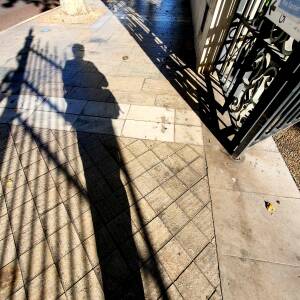Inside
Yesterday's felt like a prison, this is one. It's part of Oxford Castle which was originally built in 1071 so that the Normans could control Oxfordshire and Berkshire and had somewhere to lock up miscreants including, when necessary, 'rebellious scholars' (in 1236 just in case you thought the children of '68 started that whole students-in-the-streets thing).
From 1613 the buildings were owned by Christ Church (one of the Oxford colleges) and the prison was leased by them to warders who, in a neat foreshadowing of its conversion to a hotel nearly 400 years later and as a fine example to current politicians wanting to clamp down on scroungers, made their profit by charging prisoners for food and accommodation.
Most of the castle was destroyed in the English Civil War and in 1785, in disrepair and rat-ridden, it was bought by the Oxford County Justices. They redeveloped it into a prison and house of correction whose tower for public executions remained in use until 1863. Its 1856 modernisation gave it one central space looking onto the heavy doors of all 150 isolation cells on long iron galleries.
HM Prison Oxford was closed with a fanfare in 1993 for being too out of date and I visited it during Open Buildings Weekend that September. But by December prison overcrowding meant it was 'temporarily' back in use again, now with three prisoners in each 'isolation' cell. It finally closed in 1996 and became a film location for 'Bad Girls', 'Morse' and 'The Bill' before being converted into a luxury hotel. Controversially most of the structure was left intact and it seems that there is now no shortage of people prepared to pay £190 for a night in a room whose ceiling comprises the three arches of three former cells. I'm not one of them, though, so you'll have to make do with this peer through a window.

Comments
Sign in or get an account to comment.


